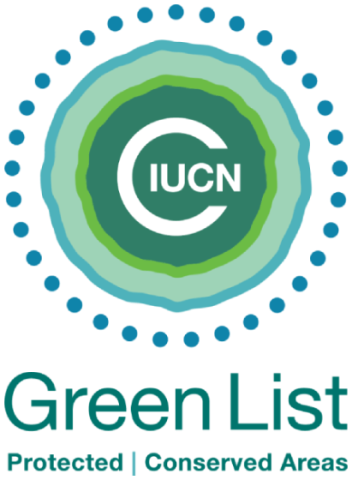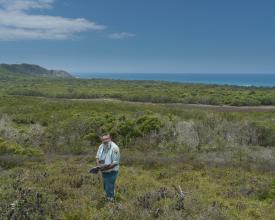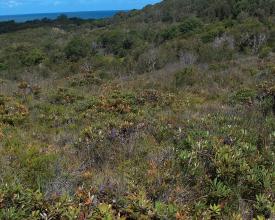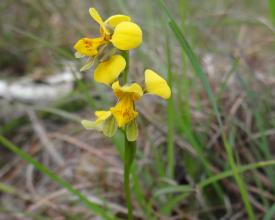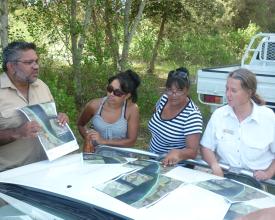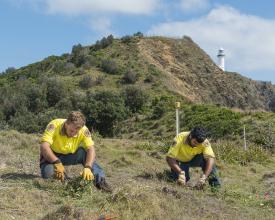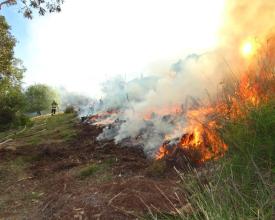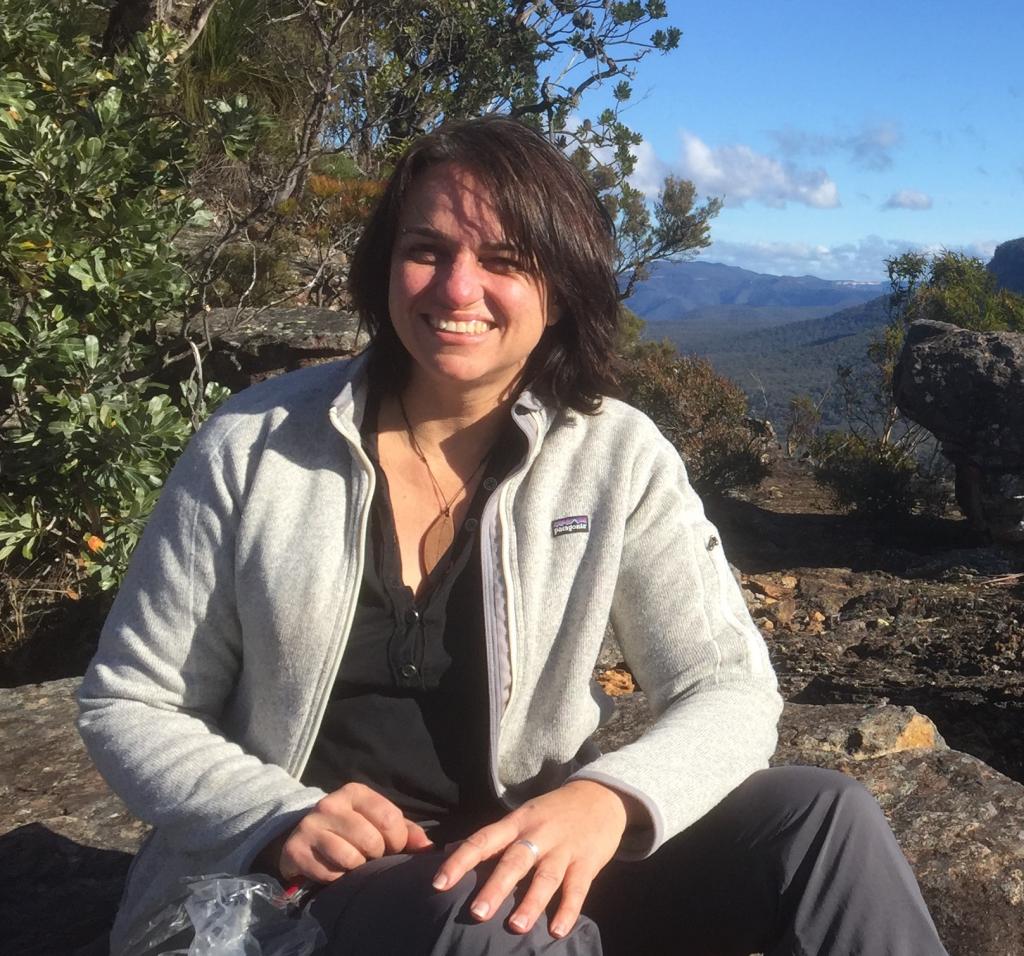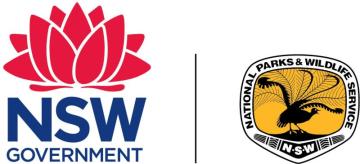
Planificación intercultural de la conservación de una orquídea amenazada (Parque Nacional de Arakwal)
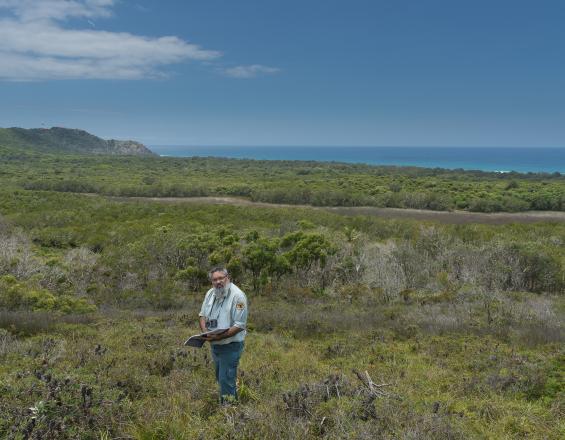
El Parque Nacional (PN) de Arakwal es una pequeña reserva costera de Nueva Gales del Sur creada en 2001. Un Acuerdo de Uso de Tierras Indígenas reconoce formalmente al pueblo Bundjalung de Byron Bay (pueblo Arakwal) como propietario tradicional y prevé su gestión conjunta con el Servicio de Parques Nacionales y Vida Silvestre de Nueva Gales del Sur (NPWS).
Aunque el PN de Arakwal es pequeño, contiene importantes valores culturales y ecológicos, como la comunidad endémica de Byron Bay Graminoid Clay Health, único hábitat conocido de la orquídea de Byron Bay(Diuris byronensis), en peligro de extinción.
Esta especie es importante para el pueblo Arakwal y es el centro de un renovado enfoque intercultural de la gestión. Los gestores del NPWS, los guardabosques de Arakwal, los Propietarios Tradicionales y los científicos han estado trabajando para incorporar el conocimiento indígena y científico y las prioridades culturales en las decisiones de gestión para la comunidad de orquídeas y brezales de arcilla. En 2018 se realizó una quema cultural del hábitat de brezales de la orquídea, la primera en 30 años. Ya hay signos de regeneración exitosa.
Contexto
Défis à relever
Los habitantes de Arakwal corrían el riesgo de perder el conocimiento y la conexión con el brezal de arcilla, ya que mucha gente se había marchado y la atención se centraba en otras zonas accesibles, como Tallow Creek. Se necesita mucho tiempo y esfuerzo para traer a la gente a Country y darles la oportunidad de volver a conectar con Country y entre sí, volviendo a contar historias importantes.
El reto es urgente, ya que existe el riesgo de que el brezal arcilloso graminoide y la orquídea de Byron Bay se extingan. Sólo quedan unas pocas hectáreas de brezales arcillosos y en los últimos años se han registrado unos pocos ejemplares de esta orquídea. Para preservar este hábitat y esta especie es necesario pensar más allá de las especies y tener en cuenta las conexiones culturales para que la gestión tenga éxito.
Llevar a cabo la quema cultural fue todo un reto, ya que el brezal arcilloso está muy cerca de comunidades urbanas, había que proteger a las orquídeas del fuego directo y la quema tenía que hacerse de forma cultural.
Ubicación
Procesar
Resumen del proceso
Aunque el pueblo Arakwal y el NPWS ya han establecido una asociación sólida y fructífera a lo largo de muchos años, este proceso dejó claro que las opiniones, los conocimientos y la cultura del pueblo Arakwal debían estar en primer plano a la hora de tomar decisiones. Asegurarse de que se utilizaban los mejores conocimientos disponibles -tanto culturales como científicos occidentales- garantizaba la mejor oportunidad de lograr resultados culturales y ecológicos. El compromiso de los gestores del NPWS y de la población arakwal de emprender las acciones identificadas de un modo culturalmente apropiado y de supervisar los resultados permitió a la población arakwal cuidar de los brezales arcillosos y las orquídeas en peligro y demostrar el valor de estos enfoques para la población arakwal, el NPWS y la comunidad.
Bloques de construcción
LOS GESTORES DE LOS PARQUES Y LOS PROPIETARIOS TRADICIONALES ACUERDAN CÓMO TRABAJAR JUNTOS
Los principios y la ética de la aplicación de un enfoque transcultural se establecieron desde el principio. Era importante que se tratara de un proceso dirigido por los arakwal y que éstos tuvieran una voz fuerte a la hora de establecer el marco de colaboración. Esto incluía quiénes eran los poseedores de los conocimientos, cómo podía compartirse la información dentro de la comunidad Arakwal, dentro del equipo de gestión conjunta y con la comunidad no aborigen en general, quién tenía voz a la hora de priorizar los valores, cómo implicar a las comunidades Arakwal y Byron Bay en general y el calendario que convenía a todos los participantes. Los guardabosques de Arakwal, la comunidad arakwal, los investigadores y los gestores del NPWS colaboraron en la identificación de una visión y un propósito compartido a través de una serie de talleres. Juntos desarrollaron una visión para la orquídea y el hábitat que la rodea: "que esta especie y este lugar estén en buenas condiciones en el futuro, y que las zonas y sus valores sean cuidados, aprendidos y utilizados por el pueblo Arakwal".
Factores facilitadores
Todos estaban comprometidos con el proyecto y abiertos a nuevas ideas y puntos de vista. Los gestores del parque, los guardas de Arakwal y la comunidad arakwal se mostraron abiertos a examinar las formas en que habían estado trabajando juntos y a colaborar con otros para mejorar lo que ya era un programa de gran éxito. Un factor clave del éxito de este proyecto fue la colaboración con investigadores del CSIRO, que habían aplicado con éxito enfoques similares con comunidades indígenas de otros lugares de Australia.
Lección aprendida
Aunque la gobernanza y los acuerdos de gestión conjunta del PN Arakwal ya eran muy sólidos y fructíferos, existía la oportunidad de utilizar nuevas vías para mejorar la colaboración. Dedicar tiempo a articular y debatir los principios y la ética sentó las bases de la apertura y la colaboración, así como de la comprensión de la forma correcta de llevar a cabo el resto del proyecto. Hay muchas formas de incorporar los puntos de vista y conocimientos indígenas a la ciencia y la gestión, dependiendo de la situación, por lo que era importante utilizar el enfoque que funcionara en este caso.
DESARROLLAR UNA COMPRENSIÓN COMÚN DE LOS VALORES MÁS IMPORTANTES Y DE CÓMO CUIDARLOS
A través de los tres talleres, los conocedores de Arakwal tuvieron tiempo de identificar, debatir y consensuar los valores prioritarios, las acciones más importantes y la forma de evaluar el éxito.
A través de este proceso, la protección y el cuidado de la orquídea de Byron Bay y su hábitat, el brezal arcilloso graminoide, fueron identificados como la mayor prioridad de gestión. Ambas especies tienen un significado intercultural para el pueblo Arakwal y están catalogadas como especies en peligro de extinción en virtud de la Ley australiana de Protección del Medio Ambiente y Conservación de la Biodiversidad de 1999. El NPWS y el pueblo Arakwal están trabajando para proteger estos valores, pero se enfrentan al reto de la escasez de recursos e información.
Se identificaron diez acciones clave para ayudar a gestionar los valores culturales y ecológicos de la orquídea y su hábitat, entre ellas: actividades para atraer a la gente al campo, gestión de las malas hierbas y los árboles invasores en el hábitat de brezales arcillosos, recolección de semillas y frutos, comunicación para reducir el impacto de vecinos y visitantes. Una de las acciones más importantes identificadas fue la realización de una quema cultural en el brezal, que requiere una quema para regenerar y controlar las malas hierbas y las plantas invasoras. La quema cultural se define como "las prácticas de quema desarrolladas por los aborígenes para mejorar la salud de la tierra y su gente" (Firesticks Alliance Indigenous Corporation).
Factores facilitadores
El uso del estándar de la Lista Verde de la UICN brindó la oportunidad de estudiar las formas de identificar valores, priorizar acciones y evaluar el éxito. Los talleres se celebraron a lo largo de varios meses, lo que dio tiempo a que todos aportaran sus conocimientos y reflexionaran sobre los resultados del taller anterior. El método de priorización clasificó las acciones en función de lo beneficiosas que serían y de la cantidad de recursos necesarios para su ejecución, lo que significó que se dio prioridad a las acciones más beneficiosas aunque requirieran muchos recursos.
Lección aprendida
Para garantizar una auténtica aportación intercultural, era importante definir desde el principio valores y prioridades basados en el liderazgo arakwal.
COMPROMETERSE A APLICAR LAS MEDIDAS ACORDADAS "CORRECTAMENTE" Y EVALUAR SU IMPACTO
El pueblo Arakwal y el personal del NPWS se comprometieron a trabajar juntos para poner en práctica las acciones acordadas. El NPWS incluyó acciones en el plan anual de operaciones y trabajó con la población Arakwal para crear oportunidades que les permitieran conectar con la orquídea y su hábitat de brezales. Reconocieron que esto era importante para mantener y reforzar los valores culturales. Antes de este proyecto, el brezal no se había quemado en 30 años debido a la dificultad de obtener la aprobación para una quema cultural de matorrales junto a una zona suburbana. Aunque la quema cultural requería muchos recursos, el NPWS preparó y aprobó un plan de quema y los habitantes de Arakwal emprendieron actividades culturales como la recogida de semillas antes del incendio. Afortunadamente, en 2018 todas las condiciones eran adecuadas para una pequeña quema cultural. La salud del brezal ha sido inspeccionada por el personal del NPWS de Arakwal después del incendio y se ha informado de avistamientos adicionales de la orquídea de Byron Bay.
Como resultado de este proyecto, se elaboró un calendario de planificación estacional que destaca cómo se programan las acciones de gestión a lo largo del año, teniendo en cuenta las estaciones, las oportunidades, el clima y las prácticas tradicionales. El calendario reúne la cultura, la ecología y las acciones de gestión en un formato fácil de entender que sirve tanto de herramienta de comunicación como de programación.
Factores facilitadores
El pueblo Arakwal y el NPWS trabajaron juntos para priorizar y emprender actividades de gestión cultural y ecológica con cantidades relativamente pequeñas de financiación adicional. El pueblo Arakwal no se vio limitado a la hora de gastar el dinero, siempre y cuando se destinara a apoyar la ejecución, lo que permitió llevar a cabo actividades culturales e incorporar a miembros de la comunidad al país.
Lección aprendida
Todos los participantes en el proyecto se dieron cuenta de la importancia de celebrar el éxito como forma de inspirar a todo el equipo y de darse cuenta del valor del seguimiento. Celebrar el éxito llevó a la gente a buscar formas de mejorar y a mirar hacia el futuro y las nuevas oportunidades.
Al utilizar un nuevo método para revisar las acciones prioritarias desde un punto de vista cultural, se examinó de nuevo el Plan de Gestión del PN de Arakwal, que reorientó las acciones de gestión para proteger y restaurar la salud cultural y ecológica del brezal arcilloso.
Impactos
El pueblo Arakwal tiene una conexión con sus tierras y aguas que se remonta al menos 22.000 años. Los valores ecológicos y culturales del PN Arakwal son inseparables debido a la fuerte asociación cultural del pueblo Arakwal con la zona y a su conocimiento y uso de plantas y animales. La gestión conjunta ha tenido resultados positivos para la conservación, la cultura Arakwal y las comunidades locales
Desde 2016, el pueblo Arakwal, NPWS y CSIRO han estado trabajando juntos utilizando enfoques interculturales para identificar las acciones más importantes para rehabilitar el hábitat de la orquídea. Entre ellas se incluyen la incorporación de la gente al campo, la gestión de las malas hierbas y los árboles invasores, la recolección de bush tucker, la comunicación con los vecinos y visitantes, el mantenimiento de las pistas y, lo que es más importante, una quema cultural en el hábitat de las orquídeas. Estas acciones han sido aplicadas progresivamente por los gestores del parque con el apoyo y la participación de los habitantes de Arakwal. Se elaboró un calendario de planificación estacional para mostrar cómo se programan las acciones de gestión teniendo en cuenta las estaciones, las oportunidades, el clima y las prácticas tradicionales.
Gracias a este proceso, las comunidades locales arakwal han tenido más oportunidades de conectar con el país, compartir conocimientos y estrechar relaciones. Los guardabosques de Arakwal y la comunidad han tenido una voz más fuerte en la toma de decisiones sobre cómo cuidar el PN de Arakwal.
Beneficiarios
- Pueblo Arakwal
- Comunidad local
- Servicio de Parques Nacionales y Vida Silvestre de Nueva Gales del Sur
- Organización de Investigación Científica e Industrial de la Commonwealth
- Especies y comunidades vegetales amenazadas de Byron Bay
Objetivos de Desarrollo Sostenible
Historia
El pueblo Bundjalung de Byron Bay (pueblo Arakwal) es líder en la gestión de tierras tradicionales por sus valores culturales y de conservación, y ha logrado una serie de primicias a nivel local, nacional e internacional. El PN Arakwal fue el primer parque nacional de Nueva Gales del Sur creado en virtud de un Acuerdo de Uso de Tierras Indígenas que reconoce al pueblo Arakwal como Propietario Tradicional. La importancia internacional de este acuerdo histórico fue reconocida con el Premio Fred M. Packard de la UICN en el V Congreso Mundial de Parques celebrado en Sudáfrica.
En 2014, el Parque Nacional de Arakwal fue la primera área protegida del mundo en ser incluida en la Lista Verde de Áreas Protegidas y Conservadas de la UICN (Lista Verde de la UICN), en reconocimiento a los extraordinarios esfuerzos del personal y los gestores por lograr una gestión eficaz y equitativa.
La colaboración entre los investigadores, el pueblo Arakwal y el NPWS brindó la oportunidad de centrarse en las prioridades culturales, para que la comunidad Arakwal pasara más tiempo en el campo, con los demás y reforzara su conexión con las zonas de brezales arcillosos.
Propietarios tradicionales Arakwal de alto rango han compartido sus perspectivas sobre los beneficios para el pueblo Arakwal.
"Trabajamos juntos para adquirir conocimientos, acordar medidas y evaluar cómo queremos cuidar la orquídea de Byron Bay y nuestro país". Norm Graham, Propietario Tradicional Arakwal y Guardabosques del NPWS
"El proyecto 'Threatened Species Recovery Hub Cross-cultural approaches with Arakwal people on protecting the Byron Bay orchid and its habitat' fue una asociación inspiradora. Como socios de Arakwal entendemos el cuidado del país y a través de este proyecto nuestros conocimientos culturales y científicos se entrelazaron para proteger la orquídea y su hogar. Lo más destacado es que se nos brindó una oportunidad real de liderar respetando mutuamente los protocolos culturales y dedicando un tiempo significativo a debatir soluciones innovadoras. El proyecto nos capacitó para crear recursos e investigación continua para proteger el futuro de la orquídea". Delta Kay, oficial de educación de Arakwal y Norm Graham, guardabosques de Arakwal, NSW National Parks and Wildlife Service.
En 2019, el PN de Arakwal volvió a ser nominado para la Lista Verde de la UICN. También ese año, y continuando con la tradición de "primicias", el Equipo CSIRO, los Propietarios Tradicionales de Arakwal y los gestores conjuntos del Parque Nacional de Arakwal fueron galardonados con la medalla inaugural CSIRO al Compromiso Aborigen y de los Isleños del Estrecho de Torres por su excepcional calidad de compromiso intercultural en la protección de la orquídea en peligro crítico y su hábitat.
